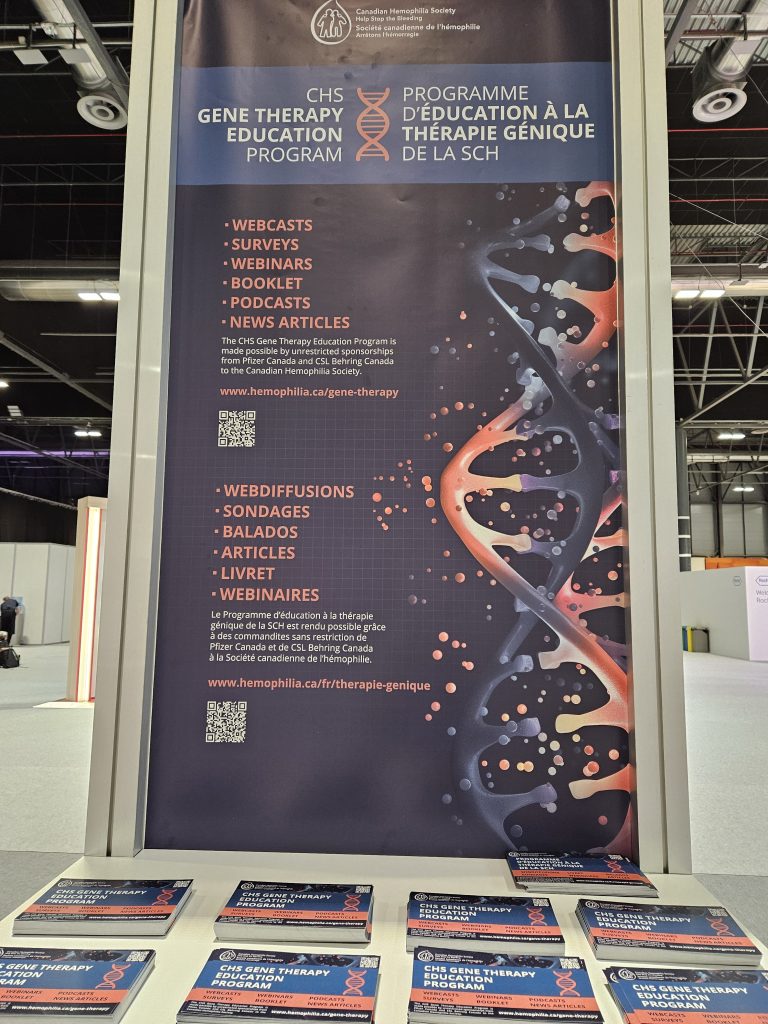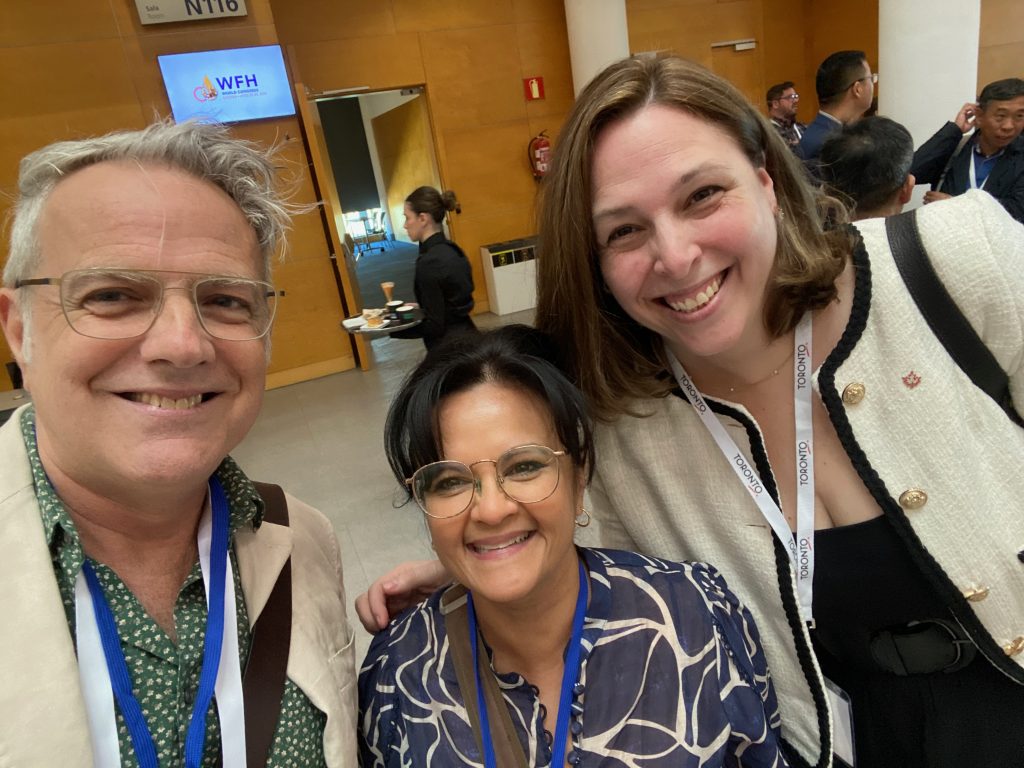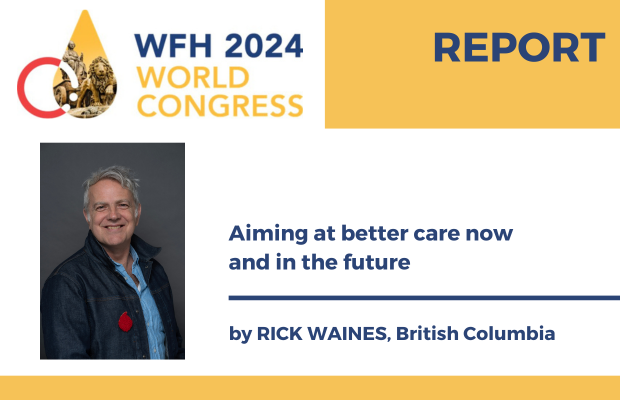I have been home from the WFH 2024 World Congress in Madrid for a month now and struggling a little as to how to synthesize my experience so that sharing might have some value. I have been pondering why it might be taking me as long as it has to sort out what to say, what to share.
I think it is due in part to some of the logistical challenges I experienced while in Madrid, which left me a little cool on the conference in general. Among these challenges was the distance from accommodations to the conference centre, and how spread out the participants were. After a long day at Congress , and a long trip back to the hotel, it made it hard to coordinate outings with others. There, I have that off my chest.
The conference itself.
I came away from Madrid with three important take aways. Gone gone gone, are the days when those of us with bleeding disorders and our treaters had one or two options for treatment – standard half-life (SHL) and extended half-life (EHL) products. Today, we have SHL, EHL, rebalancing agents, monoclonal antibodies, and increasingly real-world gene therapy options. These treatment options are not alike in many ways, aside from their goal of limiting bleeding. They do each approach the challenges differently, with very different risks and variable ways to monitor how effective they are at their job. With this in mind, I think it is important to note how complicated a job it is for health care teams at our treatment centres (HTC) to navigate this exciting new landscape, never mind how nearly impossible it is for us patients.

The CHS Gene Therapy Education Program promoted in the World Congress Exhibit Hall.
It is from this challenge that my second take away is drawn. As an organization, we must prioritize and amplify our efforts to educate our membership. We need to support the chapters, so that they will be prepared to talk with their members about these different modalities which is no small task. We have begun this increase in educational support as our CHS Gene Therapy Education Program is a great start.
Finally, we must embed into our decision-making process, from our national organization to our HTCs, and to the folks with the bleeding disorders themselves, the concept of shared-decision making. When we were considering treating ourselves with SHL products or EHL products, the decisions were relatively straightforward. Today however with the vast array growing each year of treatment options, we must as patients be informed enough to participate in the decisions that so fundamentally affect our quality of life. This includes what product we use to treat our bleeding disorder. The World Federation of Hemophilia has developed a tool to help us with this. This tool can be learned about and used here https://sdm.wfh.org.
All my best, in your pursuit of shared decision making which will mean better care now and in the future.

Rick with Wendy Quinn and Sarah Ford, respectively CHS President and CEO.
